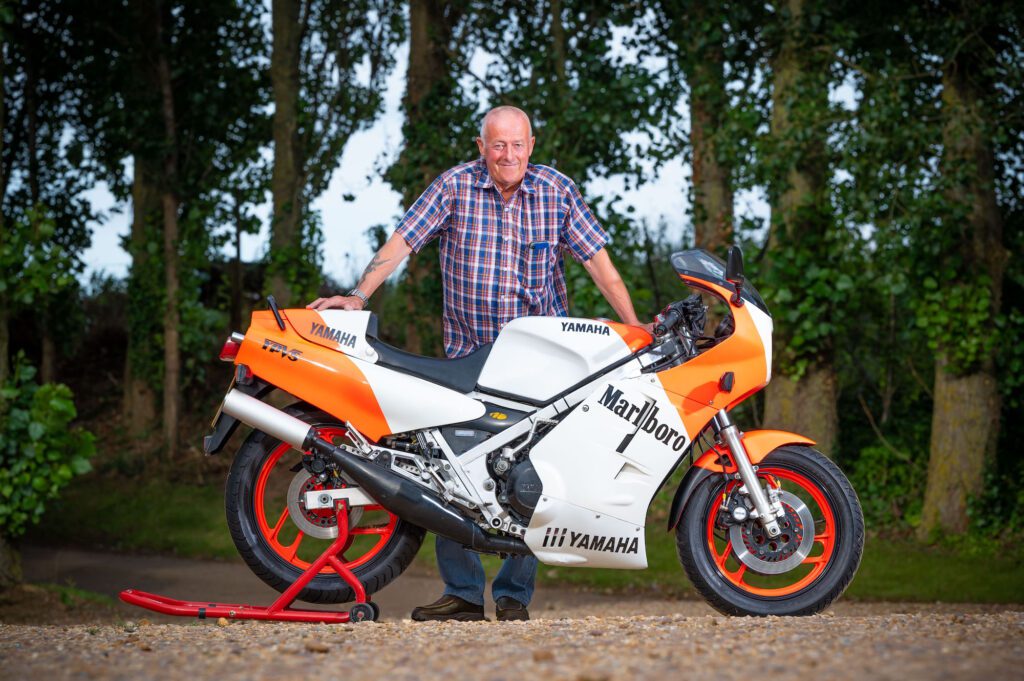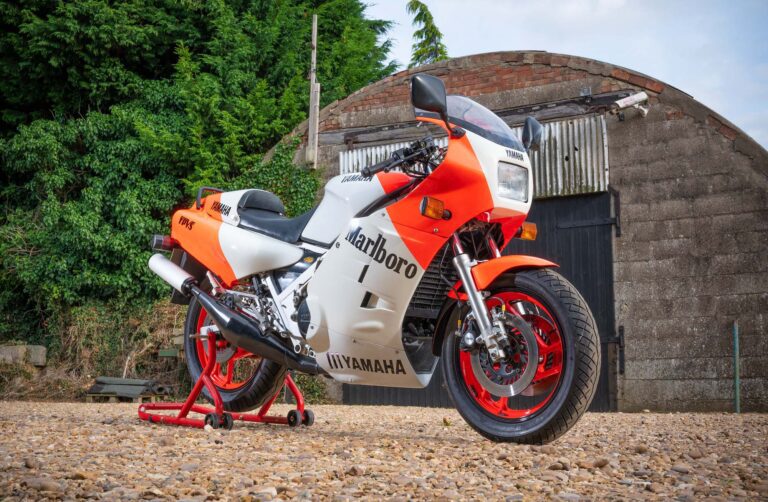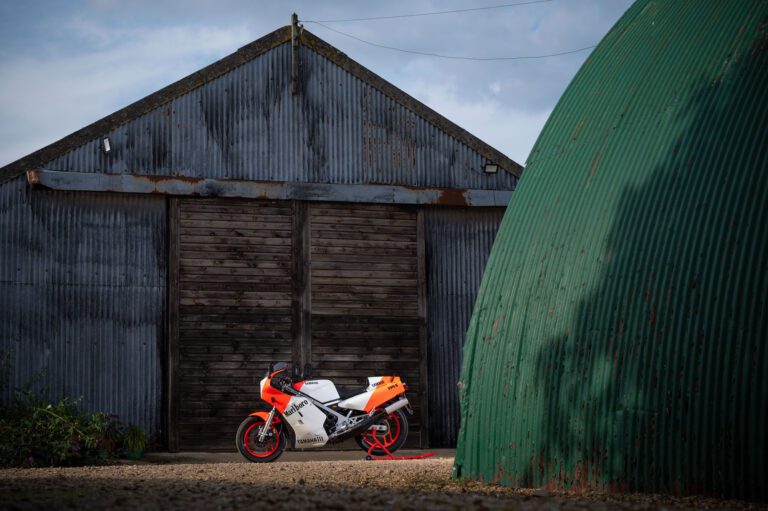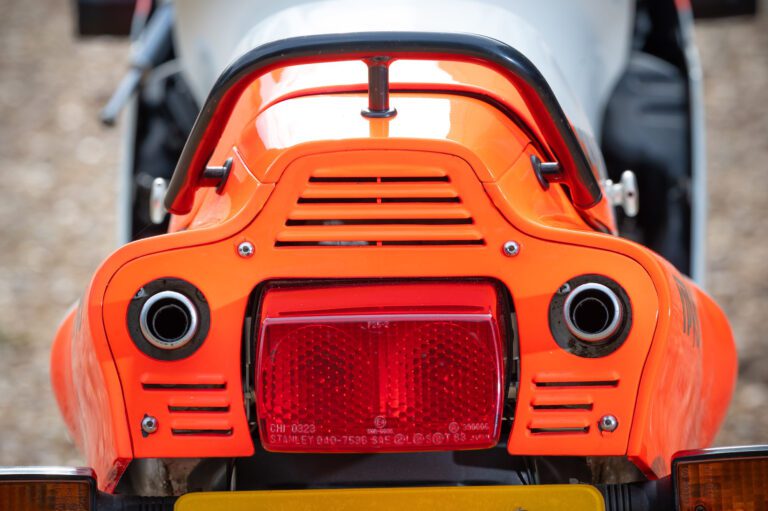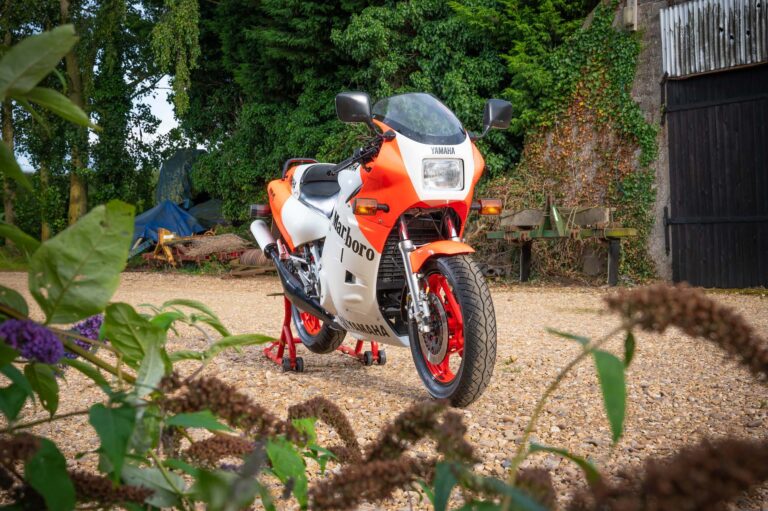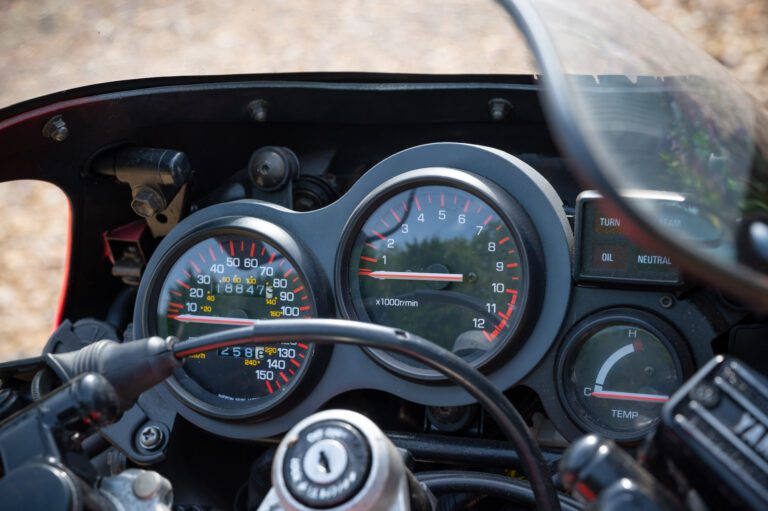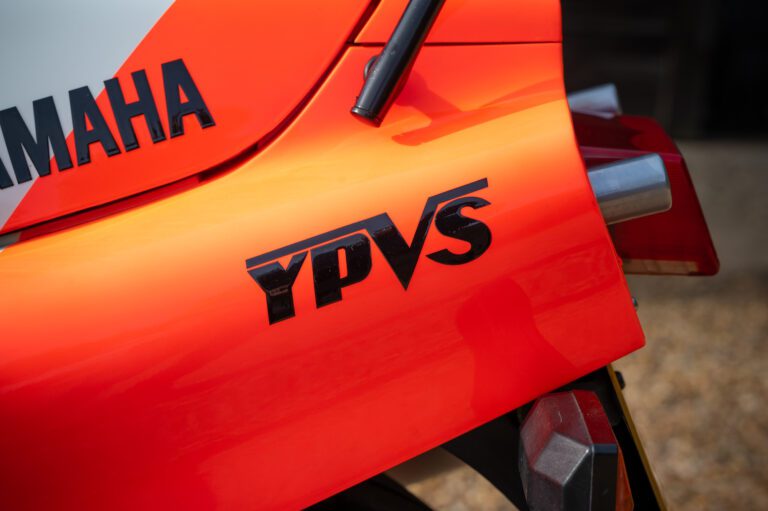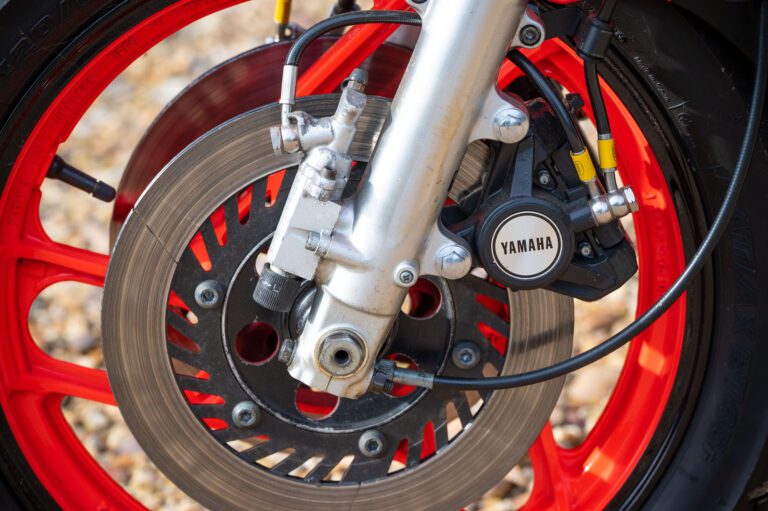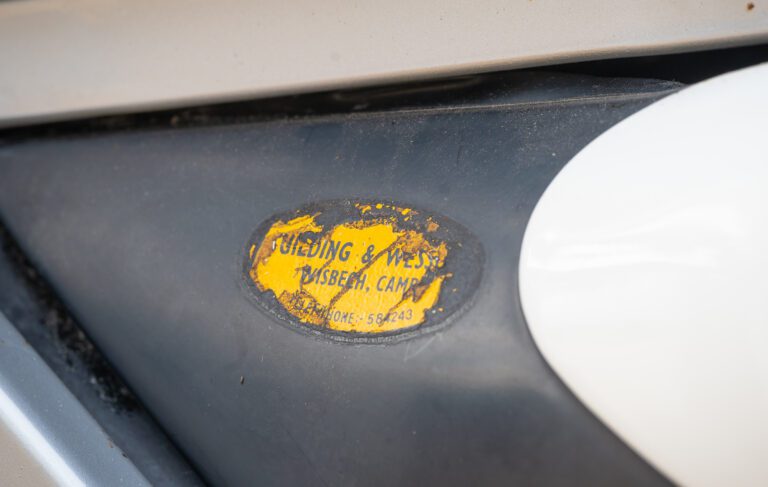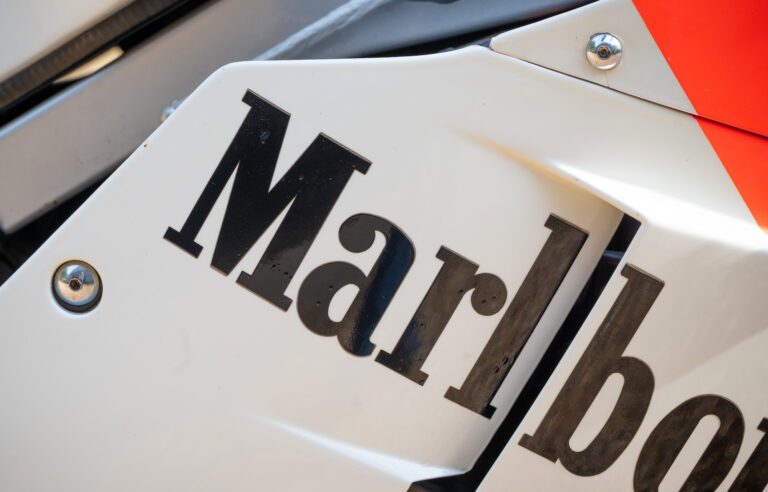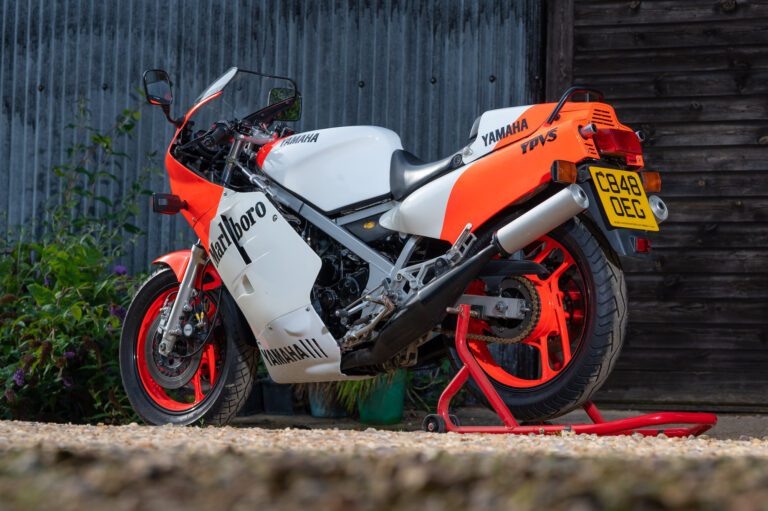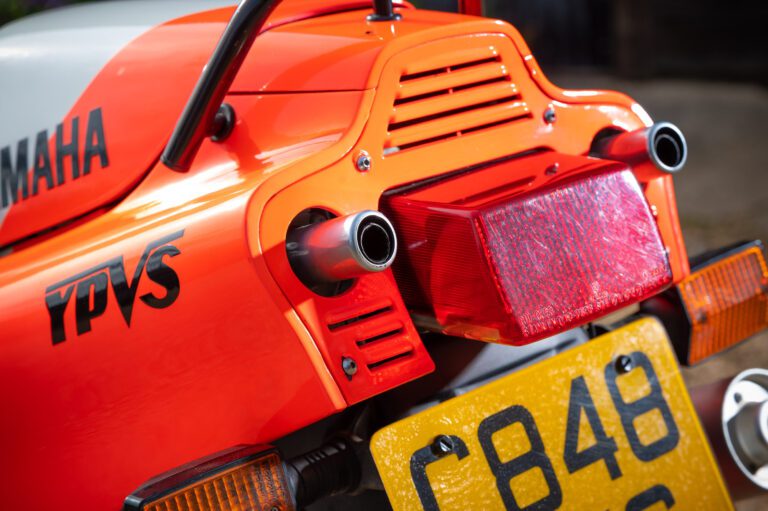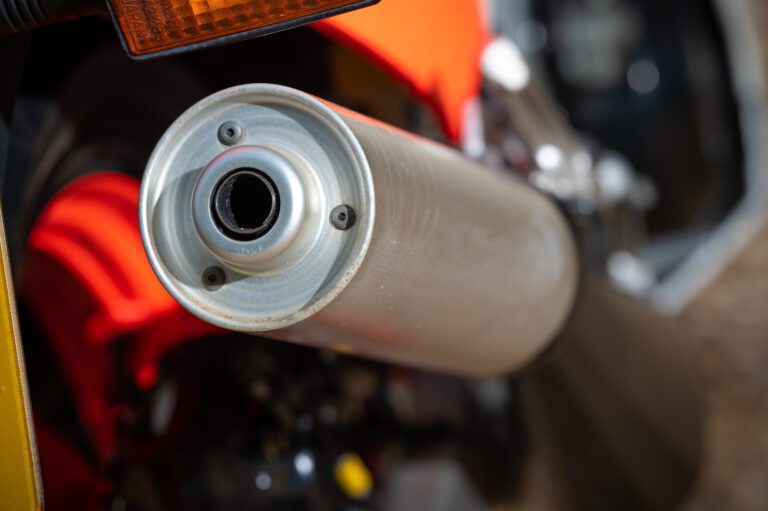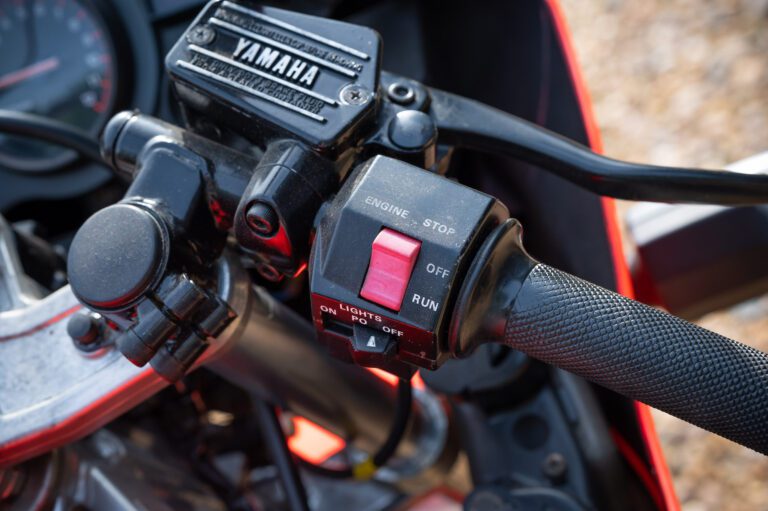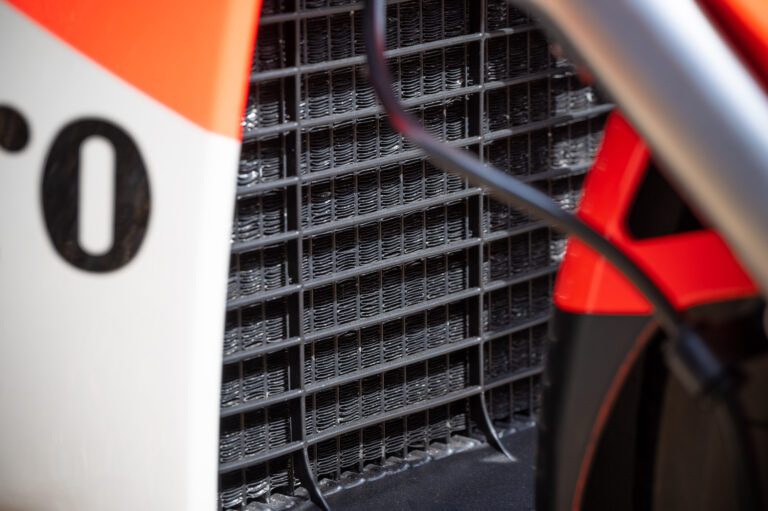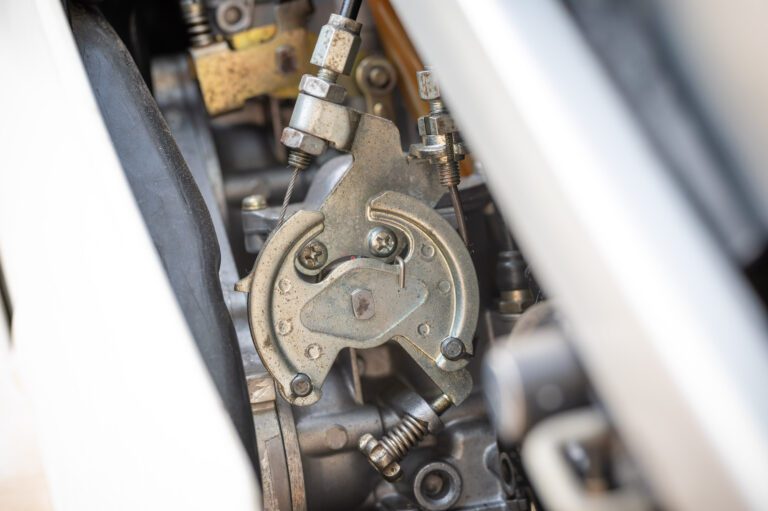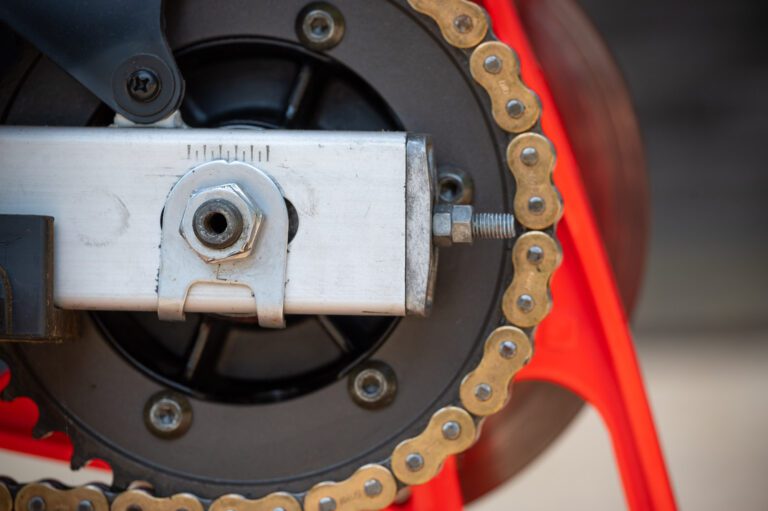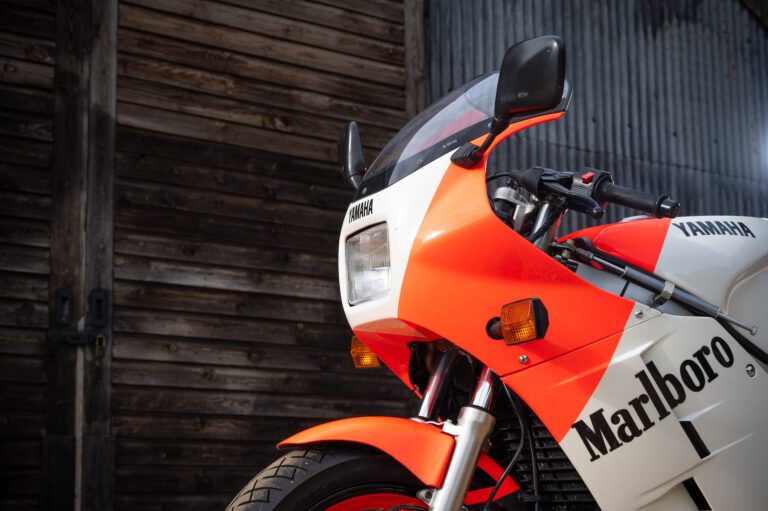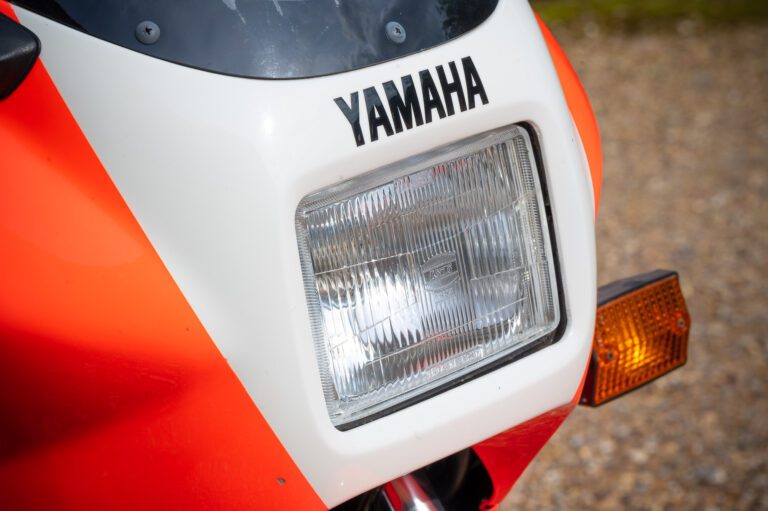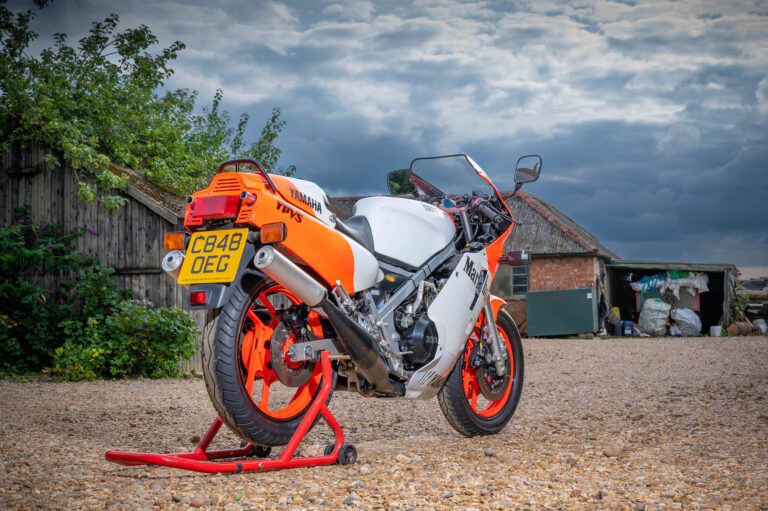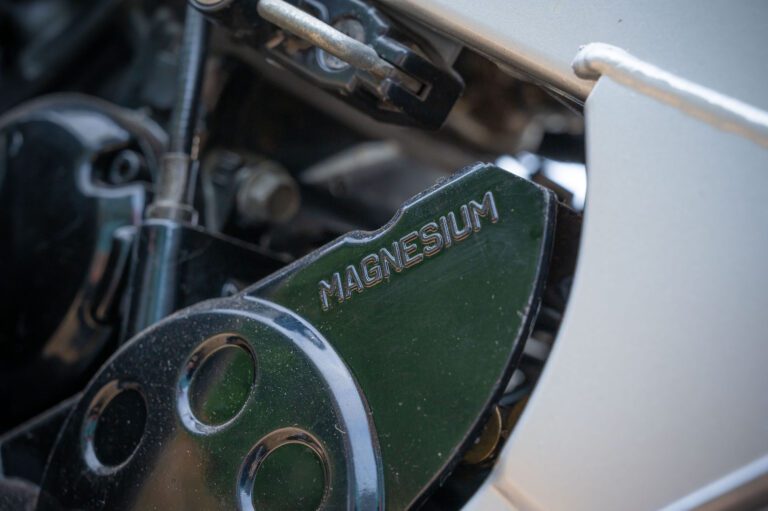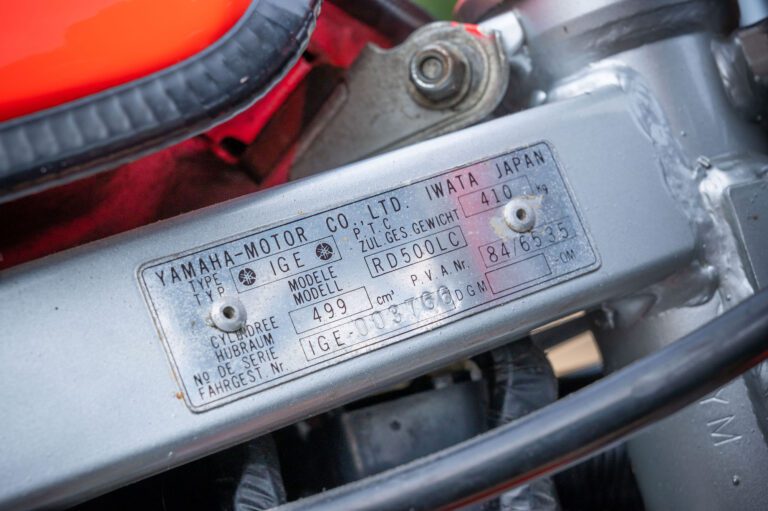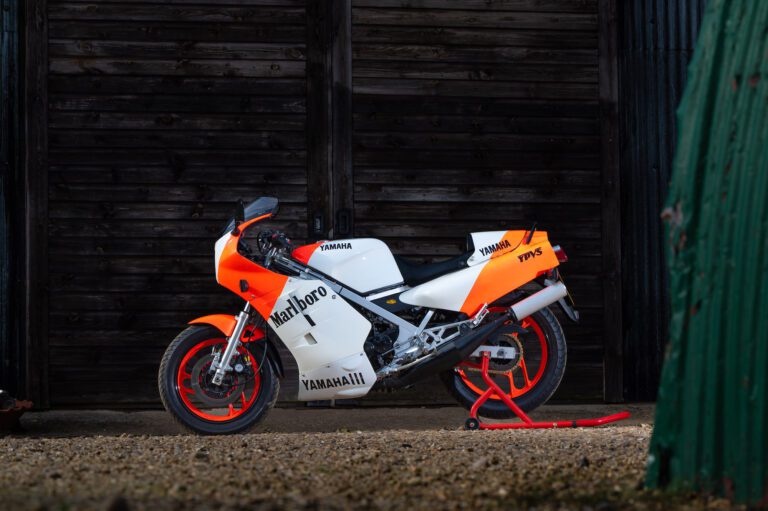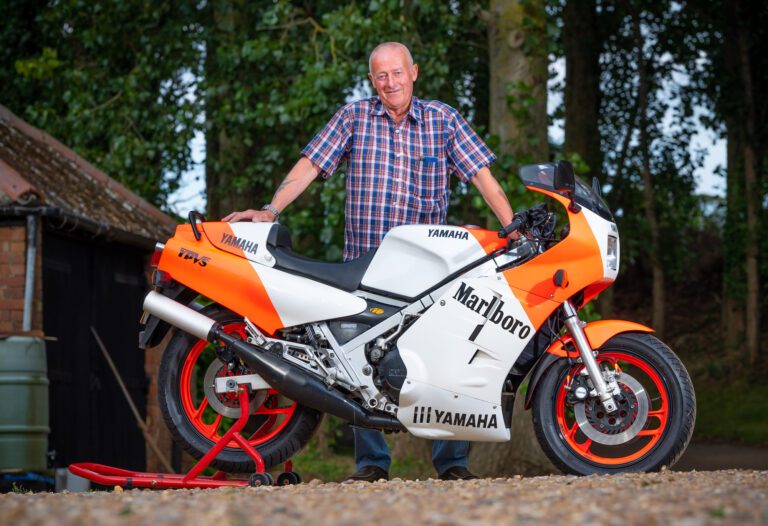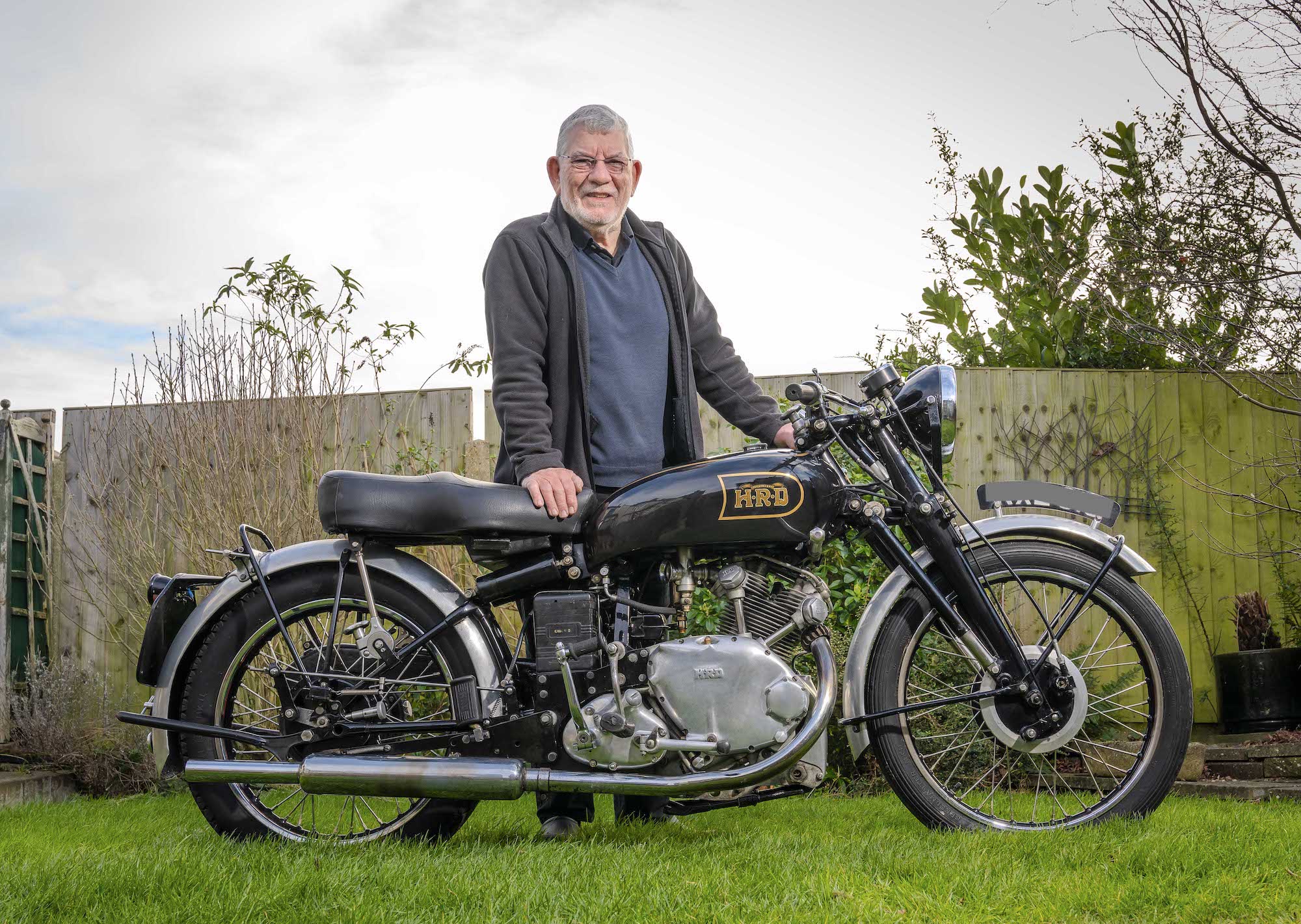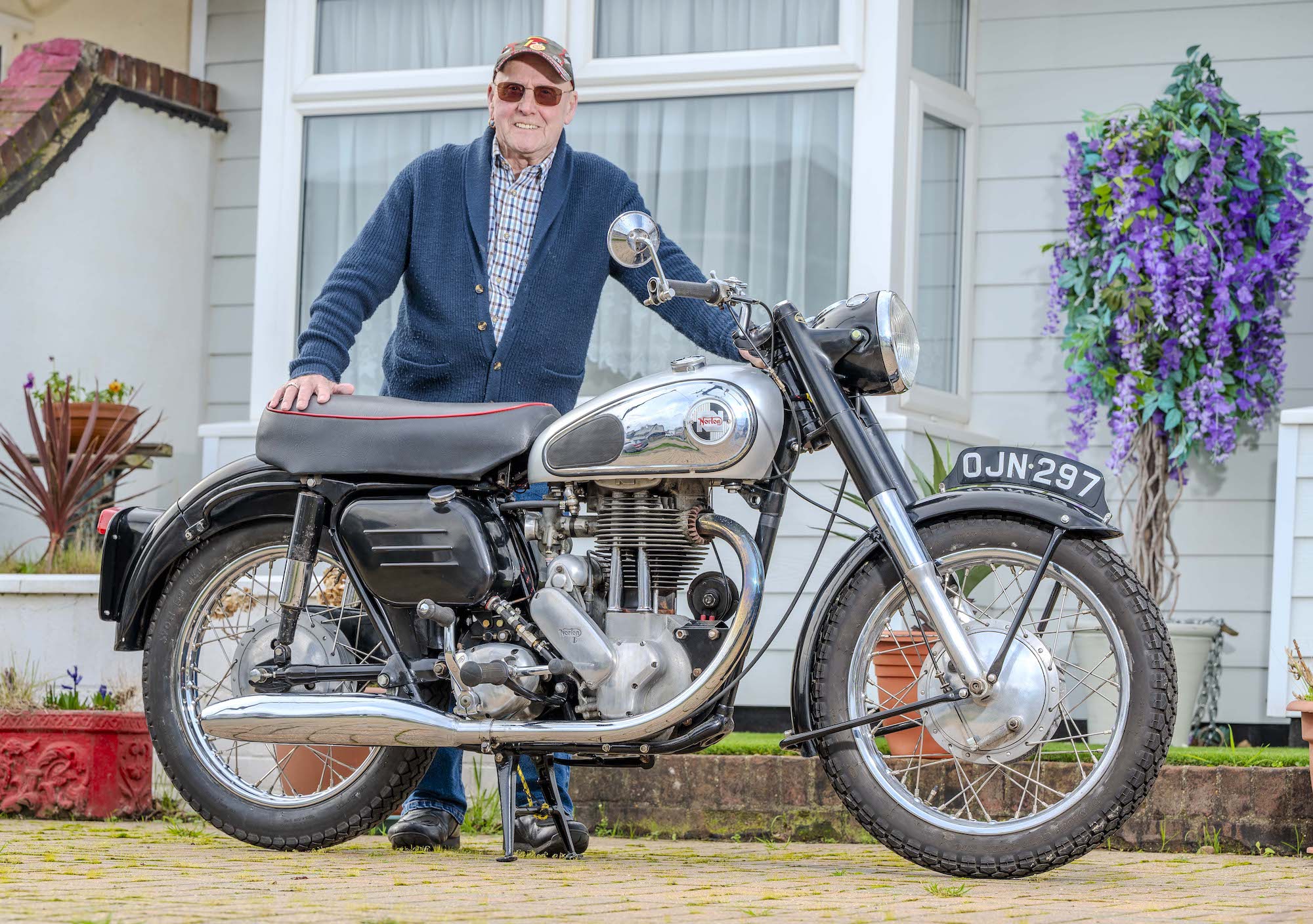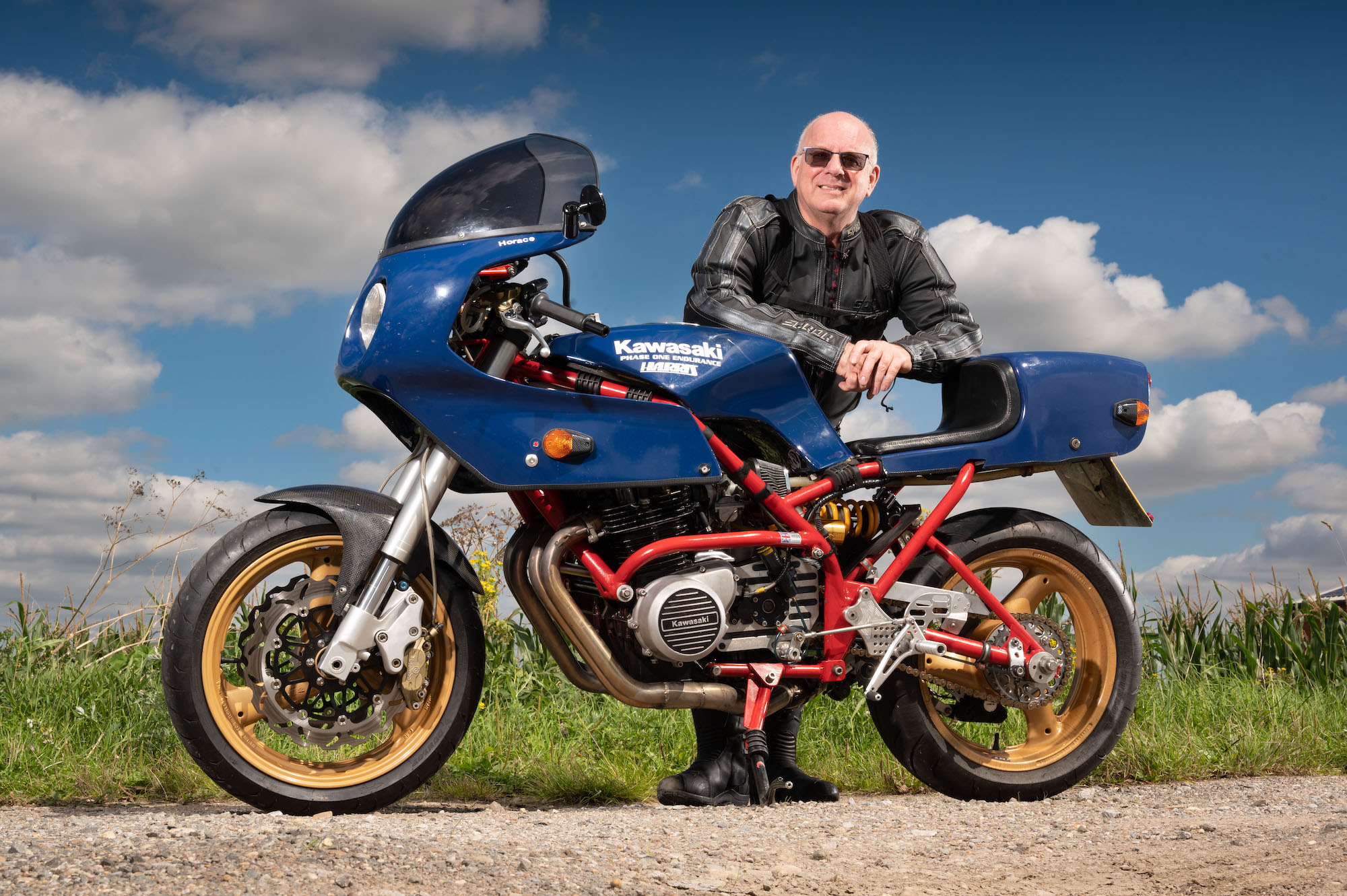When Gary Thompson wandered into his local Yamaha dealer in 1986, he had his heart set on an RD500LC – the race-bred superbike launched two years earlier.
He was quoted a price of £2,900, and was all set to place his order at Guilding & Wesson (G&W) in Wisbech when the salesman offered him the chance to spend a bit more money.
“He said it would be a wise investment because it would be a collector’s item in years to come,” says Gary at the family farm in Lincolnshire.
“So I said ‘go on then, what is it?’”
Eddie Lawson replica
For an extra £300, Gary could have one of just 100 replicas of Eddie Lawson’s Marlboro-liveried world championship winning bike, with each UK dealer limited to only one model.
“It was quite a lot of money in those days, but I said ‘go on then’, and I put a deposit down and waited for the bike to come in,” says Gary, now 66.
“They phoned me up to say the bike was in, so I went in and he said ‘you’ve walked straight past your bike’. I said ‘that isn’t an Eddie Lawson’ – turned out it needed to go to Dream Machine to be painted up in the Marlboro colours.”
Fast forward nearly four decades, and the unrestored Yamaha RD500LC, with just 19,000 miles on the clock, looks as good as the day Gary finally took delivery.
And the G&W salesman’s investment advice proved prescient, the Yamaha now potentially worth 10 times its purchase price.
“I’d had it five or six years and it was still worth the same value as I paid, and since then it just keeps going up each year,” he says. “No end of people ask me for it. The most I’ve been offered over the years is £35,000, not that long ago.”
“Pride and joy”
Not that Gary has any intention of selling his “pride and joy”.
“I’ll never sell it,” he says. “It’s like anything else – if you’ve got something and you think to yourself ‘I’ll get rid of it’, when you’ve sold it you haven’t got it and you regret it.
“So I would never sell that – it’s coming with me to the end.”
Like so many teenagers, Gary’s first bike was a Yamaha FS1-E, followed by a Yamaha DT175 on which he passed his test, and then a Honda 400 Four – two examples of which share the garage with the Lawson replica and a 2016 Yamaha MT09.
When they first became available in the UK, he bought a Yamaha RD350LC, a lightweight two stroke, so it was no surprise that his head was turned when the Japanese company stunned the biking world when they released the RD500LC.
Road-legal racer
Here was a road-legal version of Yamaha’s then-new V4 YZR500 Grand Prix bike, launched within six months of Kenny Roberts and Lawson first riding the bikes on the track.
The RD’s (for Race Developed) liquid-cooled engine was somewhat different from the Grand Prix bike’s, featuring a pair of 250cc twins each with its own crankshaft as opposed to the GP bike’s single crank unit.
Yamaha’s two-stroke power valve system (YPVS), controlled by a single electronic unit and servo, gave greater flexibility and wider power band, as did the reed valve induction system.
The early bikes sold out straight away, despite a price tag that placed it well above much larger capacity machines like the Kawasaki GPZ1100.
First of its breed
For the first year of production, the Yamaha pretty much had the lightweight road-racer field to itself, before the Suzuki RG500 and Honda NS400, two more GP replicas, came along in 1985.
And Gary did consider both, but concluded that the Honda was too quiet – “as quiet as a mouse” – and the Suzuki had issues with hot-starting.
Once he rode his new Yamaha RD, he had no regrets.
“My first impression was that this was a bloody fast two-stroke,” he says, smiling. “I’d had an RD350, and that was quick, but this was something different.
“If you hit the throttle too hard you have to climb up the tank to keep the front wheel down. It just wants to take off.
“It was geared slightly differently to a standard RD500LC, and more race tuned. The standard one was about 138mph, and this one does round about 160mph.
“It wasn’t scary, because I’d been used to bikes and, if you used your loaf, you kept on the road.
“If you tried to show off, you could be in trouble, but I never used to do that, and that’s why I’m still here.”
Ahead of its time
With an 18 inch rear wheel, and a 16 inch front wheel, the rider sits low, and Gary says they were well ahead of their time when they were launched.
“It’s got an anti-dive system on the forks, so if you were braking really hard, instead of it going all spongy and going down, it pumps up a bit,” he says. “It won’t bottom you – the more pressure you put on the brakes, it will start pumping it up.”
The Yamaha was Gary’s only bike when he bought it but, as he also had a car, it was used purely for pleasure, for runs out in the countryside and trips to race meetings at circuits including Cadwell Park, Mallory Park, Brands Hatch, and Silverstone.
“We’d have a ride around and meet up somewhere, get to a cafe and have a chinwag,” he says. “There were all different sorts of bikes, and one of the clubs I belonged to years ago was pretty good because there were probably 20 people out for a ride at once.
“They’d put the small bikes at the front and the faster bikes at the back. When you’re trying to keep up with something 20 bikes away, and you get to cars and traffic and things, you start to get behind and you have to catch up. If you had the quick bikes at the front, they’d never catch up.”
Gary says the bike never attracted too much attention at racetracks back in the day, despite its rarity.
“I can remember one day at Cadwell when I’d had it two or three years, and there were three of these parked together – mine and a man and wife’s,” he adds. “She got hers from one place and he got his from another, because Yamaha wouldn’t give two to any one shop.”
Undulating Fenland roads
Our journey to Gary’s home, on the banks of the River Nene a stone’s throw from The Wash, took in the undulating roads and sharp bends typical in this part of the Fens.
But Gary much prefers riding around this unique landscape than hammering along the A-roads on his travels to race meetings.
“I prefer these roads – I don’t like straight lines, and if you look at a lot of people on motorbikes you look at the tyres and a lot of them have got a flat spot in the middle because they’ve just belted it fast,” he explains.
“Although we do get corn and everything on the roads in the late summer and early autumn, so that’s another thing you have to be careful of.”
Despite the Yamaha’s race-bred potential, Gary has never been tempted to take the bike on the track.
“I’ve never raced it, or even done a track day,” he says, “because I’ve seen the idiots! On track days people get their race heads on, and it’s not worth the risk.
“It’s other people you need to worry about, and that’s why I wouldn’t bother.”
It’s not known how many of the 100 official Eddie Lawson replicas remain, but Gary does know that it’s no more than 99.
“My mate had one and he wrote it off completely,” he says. “He was going too fast round a corner, it high-sided him and, while he missed the lamppost, the bike didn’t and it crushed it round it more or less.”
Beware of fakes
Anyone looking to buy one should beware of replicas of the replica, with some owners of standard bikes having them painted up in the Marlboro colours.
“I remember going into Webb’s at Eye (now in Peterborough), all dressed up in Max Biaggi’s gear because I couldn’t afford Eddie Lawson’s – they cost three times as much,” he laughs.
“I drew in this place, and matey boy comes out and says ‘is that your RD?’ I said ‘what’s the giveaway?’
“He said ‘is that original?’ I said ‘yeah, why?’ he said ‘I don’t think it is’. He said he had an original that he raced and it was different to mine.”
As well as some small differences in the paintwork on the wheel rims and mudguard, the man was puzzled why there was no visible spring on the footbrake – which Gary says is concealed on the Lawson bike.
“He just went ‘oh shit, I’ve been done’,” he smiles.
As well as being the real thing, Gary’s Yamaha is almost entirely original.
“The only thing that isn’t original is the steering damper, which I had fitted because every time it came down it gave me a tank slap with the handlebars, so I had to stop that,” he says.
“But it’s never had an accident, so it’s not bent or anything.”
A few consumables have obviously been changed, including perished brake pipes, and Gary is waiting for one more part before he can ride the bike again for the first time in about six years.
Fuel leak
“The petrol started leaking a little bit, and I wondered where it was coming from, and the mechanic I use found it,” he says. “It was the fuel pipe that leads from the tank to the carbs – he took it off and it just snapped in half. Once he can find one, I’ll be able to ride it again.”
Having just retired as a carpenter, Gary hopes he will now have the time to indulge his passion for the bike, along with his other great love – sea fishing.
“I can’t wait to blow away the cobwebs – I’ll go a fair way on it,” he says.
Of all the bikes in Gary’s garage, he would keep the RD if he could only have one.
“Even if I was bankrupt it would still be with me because I’d hide it,” he laughs. “It’s something I wanted, I managed to get it, and I’m quite happy with it. It’s my pride and joy.”
The Yamaha, and the two Hondas and the MT09, will one day go to his daughter – who doesn’t ride, or even drive.
“When I’m gone, she can do what she wants with all the bikes, because I won’t be around to be bothered,” he says. “They are all an investment for her and the children.”
In the meantime, Gary is intent on having plenty more fun on the bike that led the ‘80s Grand Prix replica charge.
